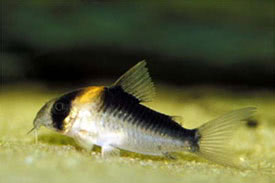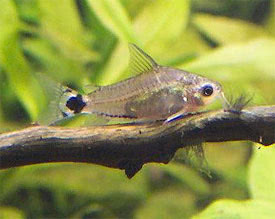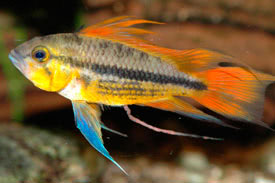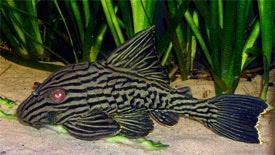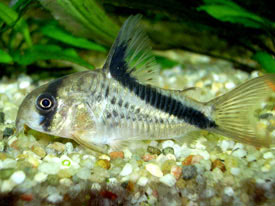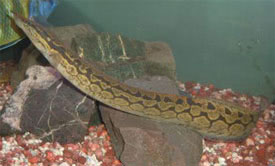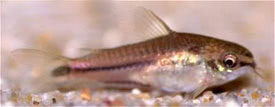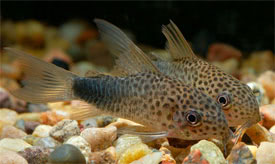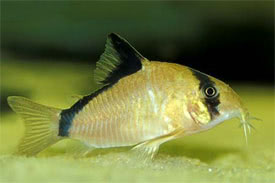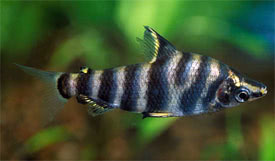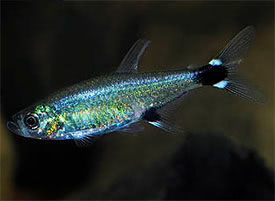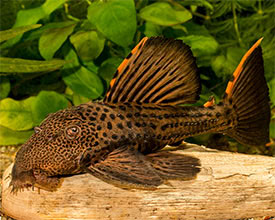
 Magyarul / Hungarian
Magyarul / Hungarian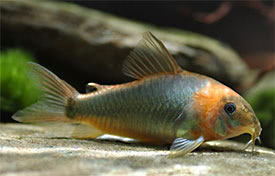

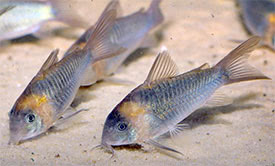

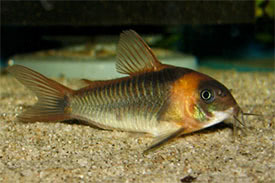
- Scientific name: Corydoras eques
- Synonyms: Osteogaster eques
- Common name: Horsemans Cory
- Group: Catfishes
- Habitat: South America; Western Brazil, Amazonas basin
- Size: 4-5 cm
- Biotope: Found in small streams and rivers near the town Codajas.
- Social behavior: A peaceful, schooling catfish, ideal for community tanks. This fish usually swims near the bottom. Do not keep with substantially larger, aggressive fish such as large cichlids
- Diet: Omnivorous; live and frozen foods, such as Tubifex, Artemia, and bloodworm are readily accepted and it will also eats dried foods and tablets.
- Breeding: Hard
- Tank: Minimum 50 litres
- Population: 6-7 fishes for 70 litres
- Decoration: They like to burrow, so use fine gravel or river sand as substrate. Provide hiding places from roots or driftwood. The lighting shouldn’t be too bright, which can be obtained with floating plants.
- Temperature: 22-26 °C
- pH: 6-8
- Hardness: 2-16 NK°
- Lifespan: 5-8 years
Description: Corydoras eques has a body with a turquoise to blue coloration, while in a certain light a darker band becomes visible that running along the top of the body from the nape to the adipose fin. There is a sadle-like large orange band behind the eyes running between the base of the fishes pectoral fins and over the head. All fins are clear, while the fin rays are orange. The chin and underbelly are white. Their coloration often depends on the color of the substrate. An attractive little fish, that can be rarely seen in the hobby, thus their price are usually high. All Corydoras catfish like to shoal, so keep them in groups of 5 or more fish. Females are a little larger and have a rounder belly, while the males are a little slimmer.
Cories are best bred in groups in a separated 40 litres tank, and should have a ratio of 2-3 males to each female. Floating plants should be provided in the breeding tank, as this species tends to deposit eggs close to the water surface. Perform a large water change (50%) with RO water, or rainwater approximately 5 °C cooler than the tank water to initiate spawning. This may have to be repeated over several days before spawning is triggered. Courtship consists of the male touching the female with his snout and then the female will swim constantly around cleaning rocks or plant leaves in the tank, they will also become much more active. Corydoras adopt a T-shaped spawning position, where the male will grab the females pelvic fins and twist his body into hers and she will release her egg pouches at the same time as the male sperm. This is repeated several times with the female taking the egg pouches and placing them at various locations throughout the tank. The number of the eggs can be around 100, and the eggs will hatch in 3 to 4 days and the fry will be free-swimming a couple of days later. The young fish can be fed with fine flake foods or newly hatched brine shrimp. Maintaining water quality is the key to raising cory fry so ensure regular water changes take place. The fry seem less susceptible to diseases when maintained over a thin layer of sand rather than in a bare-bottomed tank. Their attractive pattern can be seen from 10 days or so, while they start to develop the adult pattern from about 5 or 6 weeks of age.


































